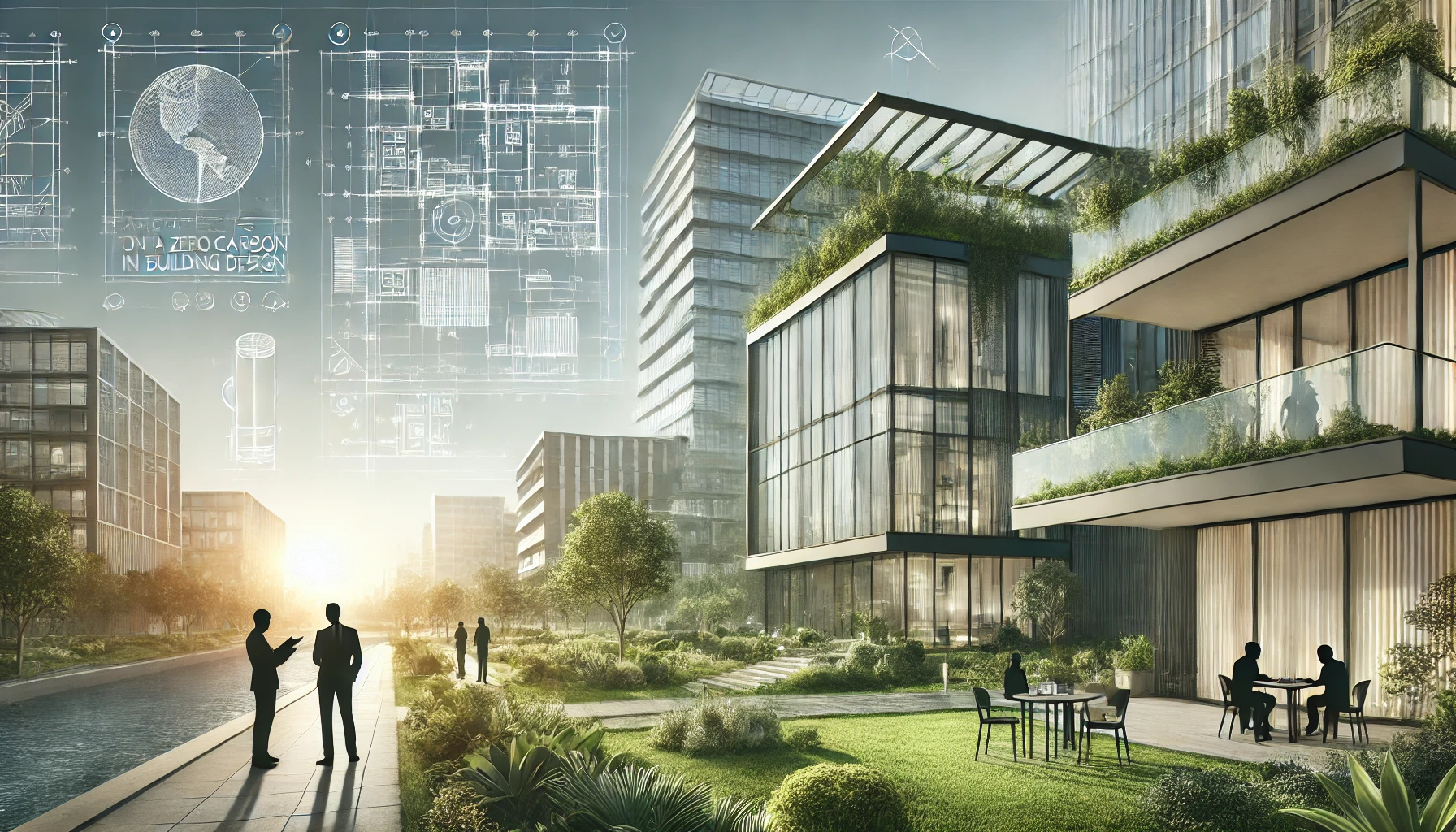
Architects on a Mission: The Path to Zero Carbon in Building Design
In an era where sustainability is no longer a choice but a necessity, architects worldwide are striving to minimize the environmental impact of their designs. Vistaar Designs, led by the visionary architect Vibhuti Sangal, is one such firm committed to redefining architecture with a focus on zero-carbon building design.
With the global construction sector contributing significantly to carbon emissions, the journey towards zero carbon buildings is filled with both challenges and opportunities. From innovative materials to energy-efficient designs, Vistaar Designs is at the forefront of integrating sustainability into the built environment.
Understanding the Zero Carbon Mission in Architecture
A zero-carbon building aims to eliminate carbon emissions across its lifecycle, including construction, operation, and even demolition. Achieving this requires a holistic approach that considers various aspects:
- Energy Efficiency: Reducing the building’s overall energy consumption.
- Renewable Energy Sources: Integrating solar, wind, or other renewable energy sources to power the structure.
- Low-Carbon Materials: Using sustainable materials like mass timber, recycled steel, or bio-based insulation.
- Operational Strategies: Implementing smart energy management, natural ventilation, and passive heating and cooling techniques.
At Vistaar Designs, every project is a step toward this vision. The firm not only focuses on eco-friendly designs but also ensures that its clients understand the long-term benefits of investing in sustainable architecture.
Challenges in Achieving Zero Carbon Architecture
Despite the ambition, the road to zero carbon is complex. Several challenges make this mission difficult:
Embodied Carbon in Building Materials
Even if a building is powered by renewable energy, the materials used can significantly impact its carbon footprint. Cement and steel, two primary construction materials, are among the largest carbon emitters. At Vistaar Designs, a conscious effort is made to explore alternative materials such as cross-laminated timber (CLT), low-carbon concrete, and recycled materials to reduce embodied carbon.
Energy Transition and Grid Dependency
While renewable energy sources have become more accessible, most buildings still rely on fossil-fuel-based grids for electricity. Achieving zero carbon requires solutions like on-site solar panels, wind energy integration, and efficient energy storage systems. Vistaar Designs integrates such renewable systems in its projects to reduce grid dependency.
Cost and Client Awareness
Sustainable construction often comes with a perception of higher costs. However, the long-term savings from lower energy bills, reduced maintenance costs, and increased property value make it a viable investment. The team at Vistaar Designs educates clients about the financial and environmental benefits of sustainable architecture, making them partners in the zero-carbon mission.
Regulatory and Policy Barriers
Regulatory frameworks around sustainable architecture vary by region. While some governments offer incentives for green buildings, others still lag in policies promoting low-carbon construction. Vistaar Designs actively engages with local authorities, urban planners, and sustainability organizations to advocate for better policies.
The Role of Innovation in Sustainable
DesignPassive Design Strategies
Vistaar Designs emphasizes passive design techniques to reduce energy demand. These include:
- Optimized building orientation for maximum daylight and heat gain in winters.
- High-performance insulation and glazing to improve thermal efficiency.
- Natural ventilation systems that reduce the need for mechanical cooling.
Smart Building Technologies
The firm integrates IoT-driven energy monitoring, smart thermostats, and automated lighting systems to enhance energy efficiency in buildings. Smart technologies help optimize energy usage by adjusting heating, cooling, and lighting based on occupancy.
Adaptive Reuse and Retrofitting
Instead of demolishing old structures, Vistaar Designs promotes adaptive reuse and retrofitting to extend the lifecycle of buildings while minimizing waste. Renovating existing buildings with energy-efficient upgrades, green roofs, and water-efficient systems helps in achieving sustainability goals without excessive resource consumption.
Vistaar Designs’ Commitment to the Future
Showcase Project: A Net-Zero Office in Noida
One of Vistaar Designs’ flagship projects is a net-zero energy office in Noida. The project features:
- 100% renewable energy dependency through solar power.
- Rainwater harvesting and water recycling systems.
- Sustainable materials that minimize carbon emissions.
- A green rooftop garden to improve urban biodiversity and insulation.
This project stands as a testament to the firm’s ability to merge aesthetics with sustainability, proving that zero-carbon buildings are not just a possibility but a reality.
The Road Ahead: Building a Sustainable Tomorrow
The journey toward a zero-carbon future requires collaboration across industries, government bodies, and communities. Vistaar Designs continues to lead this transformation by:
- Partnering with sustainable material suppliers to push innovation in low-carbon construction.
- Educating architects and builders about sustainable design practices.
- Influencing policy changes for a more environmentally responsible built environment.
As Vibhuti Sangal Architect in Noida and his team at Vistaar Designs continue to push boundaries, their work serves as an inspiration for architects worldwide. The vision is clear: a future where every building contributes to a healthier planet.
With the right balance of innovation, policy advocacy, and responsible design, achieving zero carbon in architecture is no longer a distant dream—it is a goal within reach. Through continuous learning and evolving strategies, Vistaar Designs is paving the way for a greener, more sustainable future in the architecture industry.
